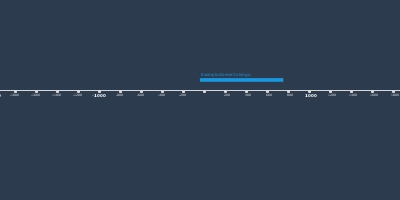31 dic 1300 anni a. C. - Êxodo Hebreu
Descrizione:
The Exodus is the founding myth of the Israelites.[1][a] Spread over the books of Exodus, Leviticus, Numbers, and Deuteronomy, it tells of the enslavement that befell the children of Israel in Egypt, their liberation through the hand of Yahweh and the revelations at Sinai, and their wanderings in the wilderness up to borders of Canaan, the land their God has given them.[2] Its message is that Israel was delivered from slavery by Yahweh and therefore belongs to him through the Mosaic covenant, the terms of which are that Yahweh will protect his chosen people for all time, so long as they will keep his laws and worship only him.[1][3] The narrative and its laws remain central to Judaism, recounted daily in Jewish prayers and celebrated in festivals such as Passover, as well as serving as an inspiration and model for non-Jewish groups from early Protestants fleeing persecution in Europe to African-Americans striving for freedom and civil rights.[4]The traditions behind the Exodus story can be traced in the writings of the 8th-century BCE prophets, beyond which their history is obscured by centuries of transmission.[5][6] No historical basis for the biblical Exodus story exists;[7] instead, archaeology suggests a native Canaanite origin for ancient Israel.[8]
HISTORICIDADE
After a century of research by archaeologists and Egyptologists[33] the consensus of modern scholars is that the Bible does not give an accurate account of the origins of Israel.[34] There is no indication that the Israelites ever lived in Ancient Egypt, and the Sinai Peninsula shows almost no sign of any occupation for the entire 2nd millennium BCE (even Kadesh-Barnea, where the Israelites are said to have spent 38 years, was uninhabited prior to the establishment of the Israelite monarchy).[35] In contrast to the absence of evidence for the Egyptian captivity and wilderness wanderings, there are ample signs of Israel's evolution within Canaan from native Canaanite roots.[36][37] While a few scholars discuss the plausibility of the Exodus story,[38] archaeological investigation has been abandoned as "a fruitless pursuit".[39]
Details point to a 1st millennium BCE date for the composition of the narrative: Ezion-Geber (one of the Stations of the Exodus), for example, dates to a period between the 8th and 6th centuries BCE with possible further occupation into the 4th century BCE,[40] and those place-names on the Exodus route which have been identified – Goshen, Pithom, Succoth, Ramesses and Kadesh Barnea – point to the geography of the 1st millennium BCE rather than the 2nd.[41] Similarly, Pharaoh's fear that the Israelites might ally themselves with foreign invaders seems unlikely in the context of the late 2nd millennium, when Canaan was part of an Egyptian empire and Egypt faced no enemies in that direction, but does make sense in a 1st millennium BCE context, when Egypt was considerably weaker and faced invasion first from the Achaemenid Empire and later from the Seleucid Empire.[42] The mention of the dromedary in Exodus 9:3 also suggests a later date – the widespread domestication of the camel as a herd animal is thought not to have taken place before the late 2nd millennium BCE, after the Israelites had already emerged in Canaan,[43] and they did not become widespread in Egypt until c. 200–100 BCE.[44]
The chronology of the Exodus narrative is symbolic: for example, its culminating event, the erection of the Tabernacle as Yahweh's dwelling-place among his people, occurs in the year 2666 Anno Mundi (Year of the World, meaning 2666 years after God creates the world), and two-thirds of the way through a four thousand year era which culminates in or around the re-dedication of the Second Temple in 164 BCE.[45][46]
Aggiunto al nastro di tempo:
Data:
31 dic 1300 anni a. C.
Adesso
~ 3329 years ago
